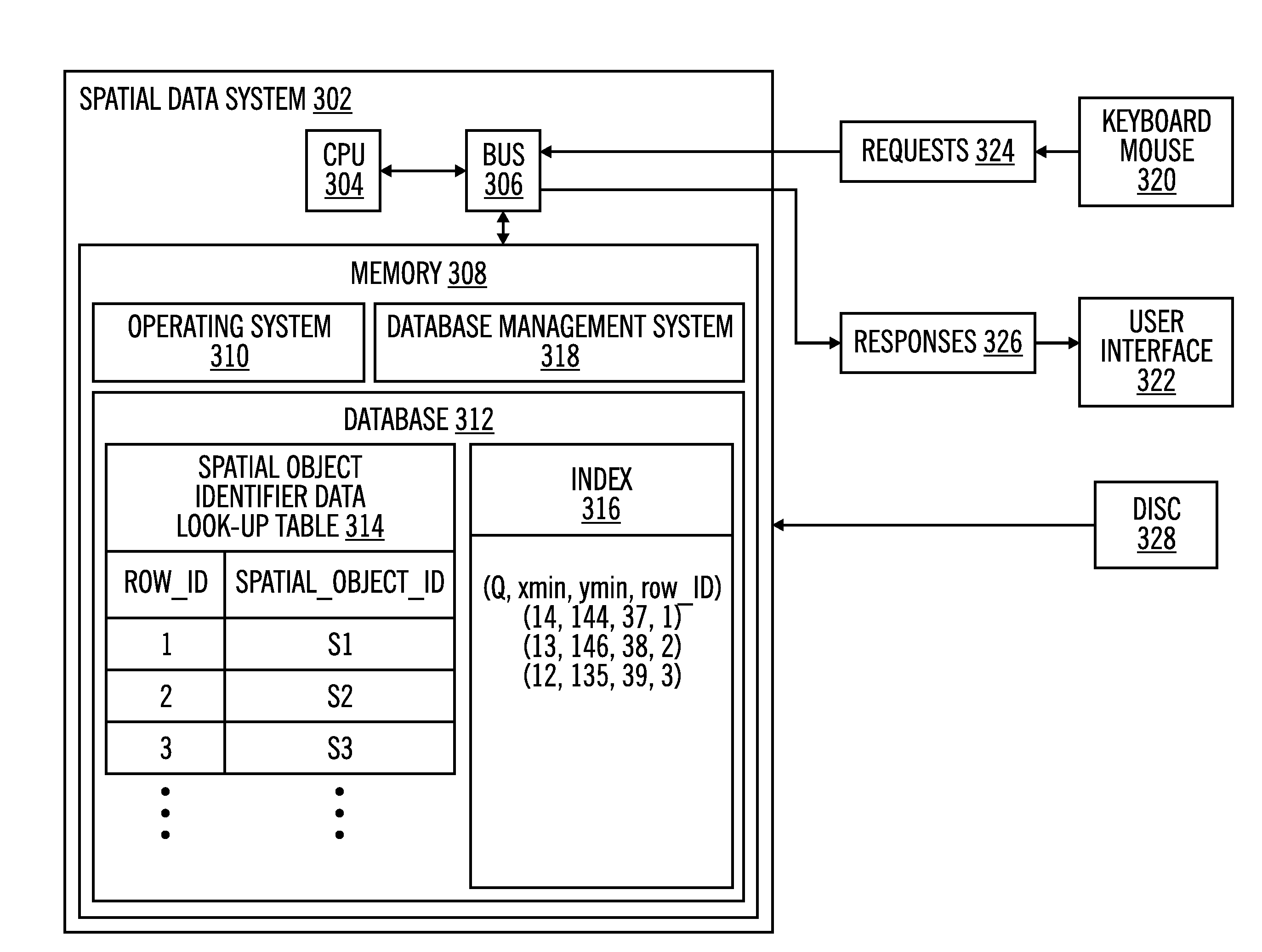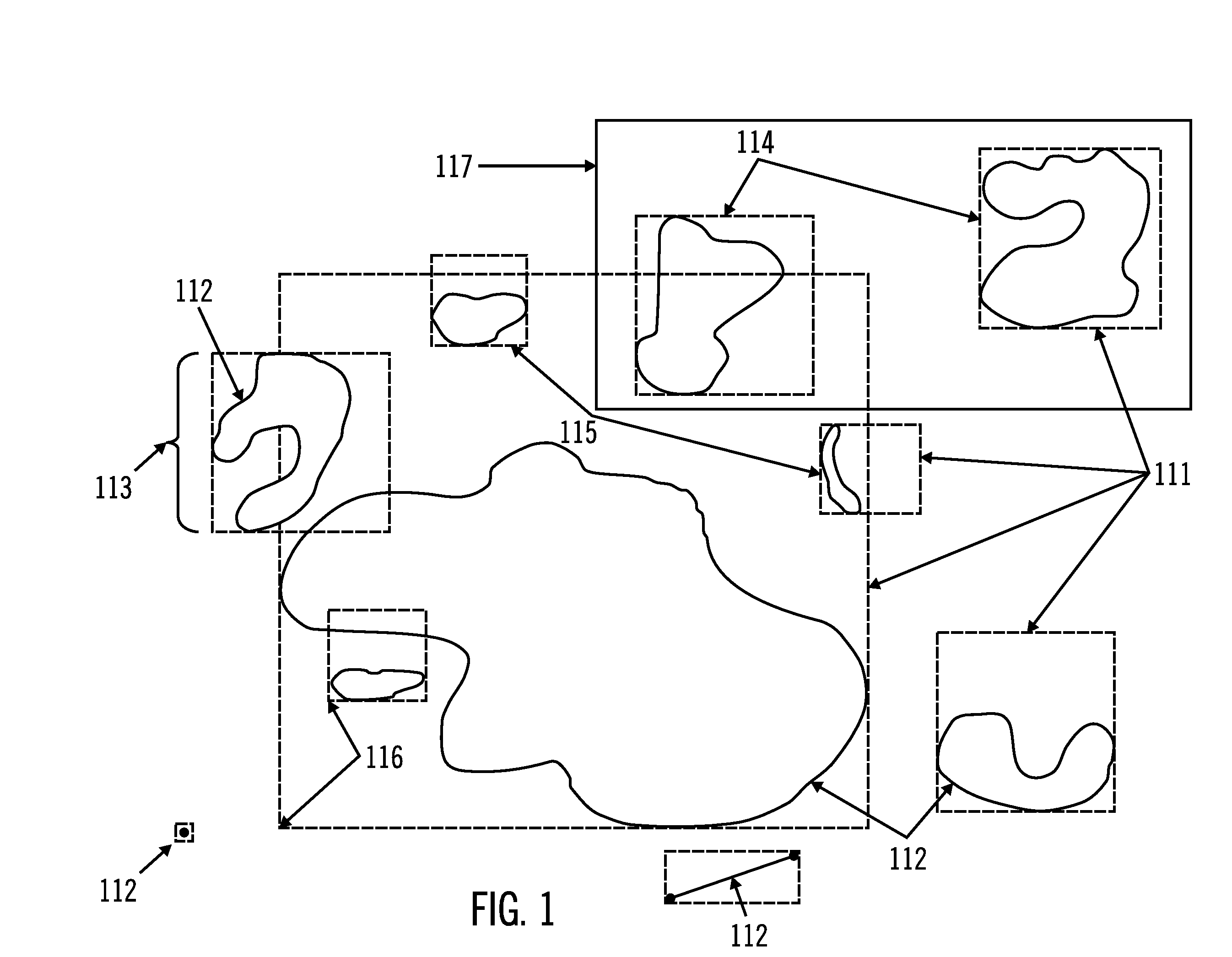Method, System, and Product for Managing Spatial Data in a Database
a technology of spatial data and database, applied in special data processing applications, instruments, electric digital data processing, etc., can solve the problems of complex spatial data structures that require substantial computer processing power, cells that are either too large or too small for spatial objects in the database, and cannot be easily applied to spatial data. , to achieve the effect of facilitating matching of database records, facilitating spatial data testing, and avoiding loss of performan
- Summary
- Abstract
- Description
- Claims
- Application Information
AI Technical Summary
Benefits of technology
Problems solved by technology
Method used
Image
Examples
Embodiment Construction
[0042]FIG. 1 depicts application of a preferred embodiment of the spatial data system on spatial objects 112, including points, lines, and polygons. Each spatial object 112 sets its own bounding shape 111 based on the size of the spatial object 112, so there is only one spatial index entry per spatial object identifier. The largest dimension 113 of the spatial object 112 determines the size of the bounding shape 111. Bounding shapes of similar sizes can be grouped according to their index dimension variables. For example, boxes of one size 114 can form one group and boxes of another size 115 can form another group. The index coordinate variables for each spatial object identifier define a single point (e.g., the extreme lower left corner 116 of the bounding shape 111). The spatial object identifier can then be indexed in the database as a function of its largest dimension and the index coordinate variables. This provides flexible spatial object data extents and avoids the requiremen...
PUM
 Login to View More
Login to View More Abstract
Description
Claims
Application Information
 Login to View More
Login to View More - R&D
- Intellectual Property
- Life Sciences
- Materials
- Tech Scout
- Unparalleled Data Quality
- Higher Quality Content
- 60% Fewer Hallucinations
Browse by: Latest US Patents, China's latest patents, Technical Efficacy Thesaurus, Application Domain, Technology Topic, Popular Technical Reports.
© 2025 PatSnap. All rights reserved.Legal|Privacy policy|Modern Slavery Act Transparency Statement|Sitemap|About US| Contact US: help@patsnap.com



